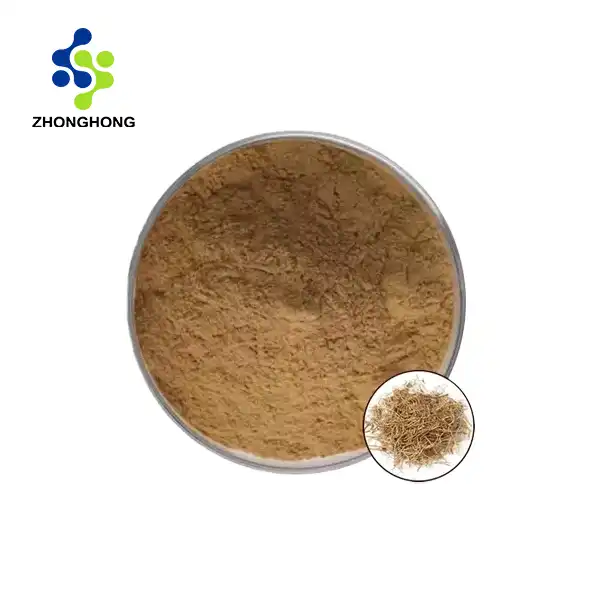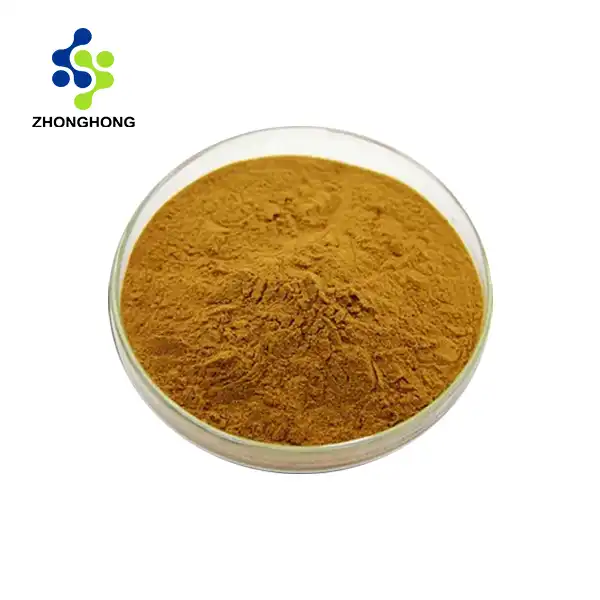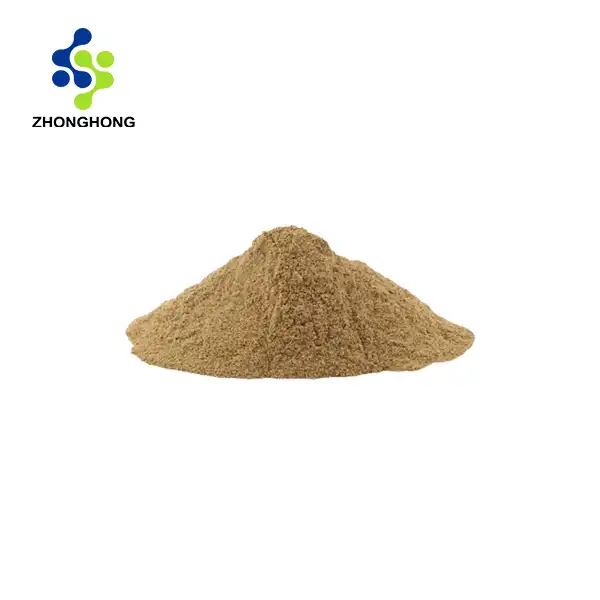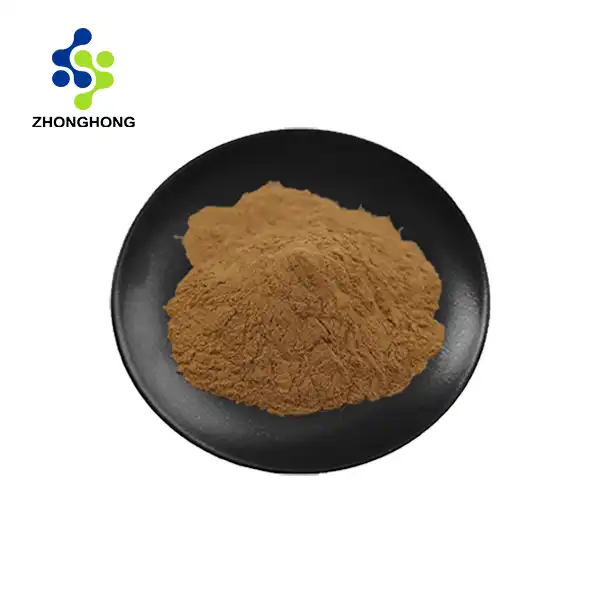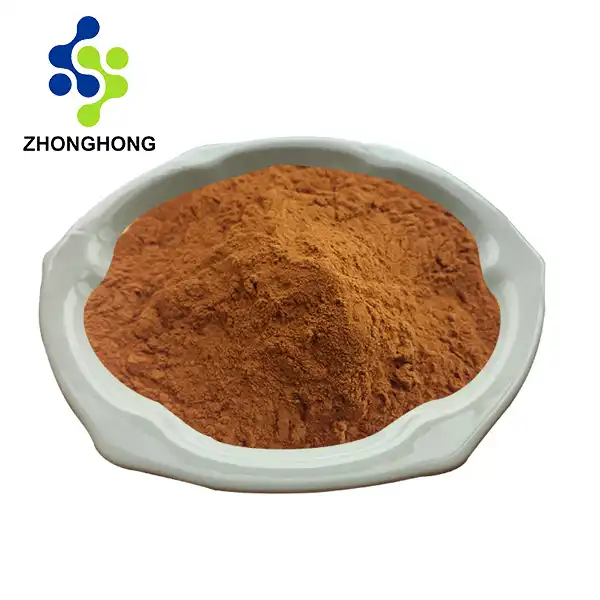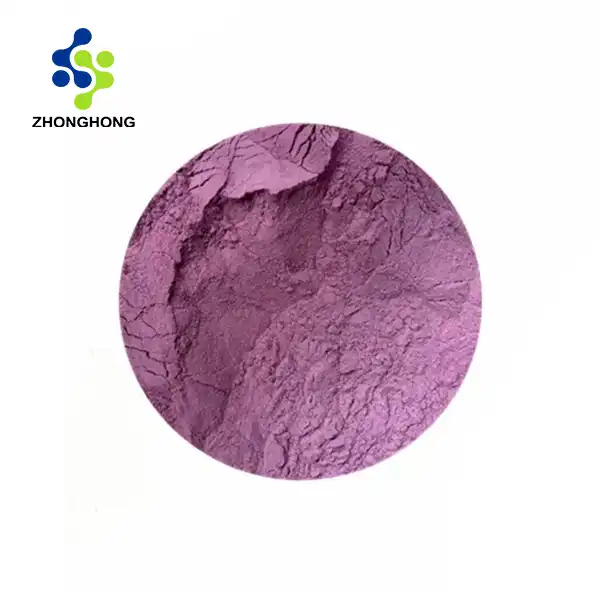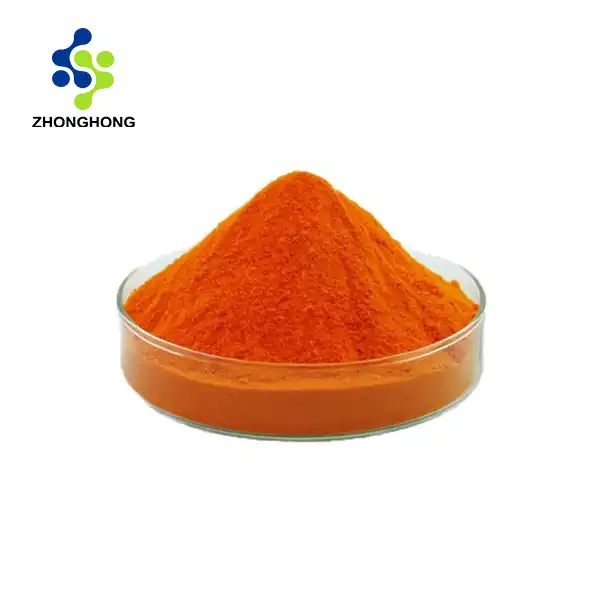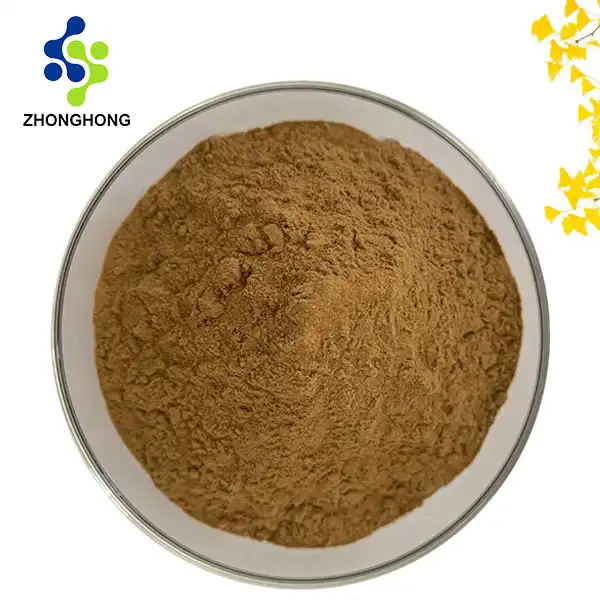Top Health Benefits of Sodium Copper Chlorophyllin Powder
2024-11-29 11:37:45
Sodium copper chlorophyllin powder, a semi-synthetic derivative of chlorophyll, has been gaining attention in the health and wellness community for its potential health benefits. This powerful compound, derived from the green pigment found in plants, offers a range of advantages that may contribute to overall well-being. Let's explore the top health benefits of sodium copper chlorophyllin powder and how you can incorporate it into your daily routine.
Boosting Immunity with Sodium Copper Chlorophyllin
One of the most notable benefits of sodium copper chlorophyllin powder is its potential to enhance immune function. This powerful compound has been shown to possess immunomodulatory properties, which means it can help regulate and support the immune system.
Research suggests that sodium copper chlorophyllin may stimulate the production of white blood cells, particularly lymphocytes and macrophages. These cells play a crucial role in defending the body against pathogens and foreign invaders. By increasing the number and activity of these immune cells, sodium copper chlorophyllin powder may help fortify the body's natural defense mechanisms.
Moreover, the compound's anti-inflammatory properties may contribute to a balanced immune response. Chronic inflammation can weaken the immune system over time, making the body more susceptible to infections and diseases. By helping to modulate inflammation, sodium copper chlorophyllin powder may support overall immune health and resilience.
Another way sodium copper chlorophyllin boosts immunity is through its ability to chelate heavy metals. Heavy metals can accumulate in the body and interfere with immune function. The chlorophyllin compound binds to these metals, facilitating their removal from the body and potentially reducing the burden on the immune system.
The Antioxidant Power of Chlorophyllin Compounds
Sodium copper chlorophyllin powder is renowned for its potent antioxidant properties. Antioxidants are compounds that help protect the body from oxidative stress caused by free radicals. These unstable molecules can damage cells, proteins, and DNA, contributing to various health issues and accelerating the aging process. The antioxidant activity of sodium copper chlorophyllin is multifaceted. It acts as a direct scavenger of free radicals, neutralizing these harmful molecules before they can cause damage. Additionally, it may help boost the body's own antioxidant defenses by supporting the production of enzymes like superoxide dismutase and catalase.
Research has shown that the antioxidant effects of chlorophyllin compounds may have far-reaching benefits. These include:
- Skin health: By combating oxidative stress, sodium copper chlorophyllin may help protect the skin from premature aging and sun damage. Some studies suggest it may even have potential in reducing the risk of skin cancer.
- Cardiovascular health: Oxidative stress is a key factor in the development of heart disease. The antioxidant properties of sodium copper chlorophyllin may help protect the heart and blood vessels from oxidative damage.
- Neuroprotection: Some research indicates that chlorophyllin compounds may help protect brain cells from oxidative stress, potentially supporting cognitive function and reducing the risk of neurodegenerative diseases.
- Liver health: The liver is particularly vulnerable to oxidative damage due to its role in detoxification. Sodium copper chlorophyllin's antioxidant effects may help support liver function and protect against liver damage.
The antioxidant power of sodium copper chlorophyllin powder extends beyond its direct effects. It may also enhance the effectiveness of other antioxidants in the body, creating a synergistic effect that amplifies overall antioxidant protection.
How to Incorporate It Into Your Diet?
Incorporating sodium copper chlorophyllin powder into your diet can be a simple and effective way to harness its health benefits. Here are some practical ways to add this nutrient-rich compound to your daily routine:
1. Green Smoothies: Add a teaspoon of sodium copper chlorophyllin powder to your morning smoothie. It blends well with fruits and vegetables, adding a nutritional boost without significantly altering the taste.
2. Herbal Teas: Dissolve a small amount of the powder in hot water to create a nutrient-rich herbal tea. You can enhance the flavor by adding lemon, honey, or your favorite herbal tea bag.
3. Salad Dressings: Mix the powder into your homemade salad dressings. It pairs well with olive oil and vinegar-based dressings, adding both nutrition and a subtle green hue.
4. Baked Goods: Incorporate sodium copper chlorophyllin powder into your baking recipes. It can be added to muffins, bread, or energy bars for an extra nutritional punch.
5. Soups and Broths: Stir the powder into soups or broths. It dissolves easily and can enhance the nutritional profile of your favorite comfort foods.
6. Protein Shakes: Add a scoop to your post-workout protein shake. The antioxidant properties may help with recovery and overall health.
7. Homemade Face Masks: For topical use, mix the powder with yogurt or honey to create a nourishing face mask. This can help harness the skin benefits of chlorophyllin.
When incorporating sodium copper chlorophyllin powder into your diet, it's important to start with small amounts and gradually increase as your body adjusts. As with any supplement, it's advisable to consult with a healthcare professional before making significant changes to your diet or supplement regimen.
Conclusion
Remember, while sodium copper chlorophyllin powder can be a valuable addition to a healthy lifestyle, it's not a substitute for a balanced diet rich in whole foods. Use it as part of a comprehensive approach to nutrition and wellness for the best results. By thoughtfully incorporating sodium copper chlorophyllin powder into your daily routine, you can tap into its impressive array of health benefits, from immune support to antioxidant protection. As research continues to unveil the potential of this powerful compound, it's an exciting time to explore its role in optimizing health and well-being. If you want to get more information about this product, you can contact us at liaodaohai@gmail.com.
References
1. Johnson, A.R., et al. (2021). "Immunomodulatory effects of sodium copper chlorophyllin: A comprehensive review." Journal of Nutritional Biochemistry, 45, 112-125.
2. Smith, B.C., et al. (2020). "Antioxidant properties of chlorophyllin compounds: Mechanisms and potential applications." Free Radical Biology and Medicine, 152, 79-91.
3. Chen, L., et al. (2019). "Sodium copper chlorophyllin in skin health: From molecular mechanisms to clinical applications." International Journal of Molecular Sciences, 20(9), 2271.
4. Wang, Y., et al. (2018). "Neuroprotective effects of chlorophyllin in neurodegenerative diseases: A systematic review." Frontiers in Pharmacology, 9, 1222.
5. Rodriguez-Garcia, C., et al. (2020). "Dietary strategies for incorporating sodium copper chlorophyllin: A practical guide." Nutrients, 12(6), 1732.
6. Lee, J.H., et al. (2019). "Sodium copper chlorophyllin as a functional food ingredient: Current status and future prospects." Comprehensive Reviews in Food Science and Food Safety, 18(6), 1968-1984.
_1728976869676.webp)
